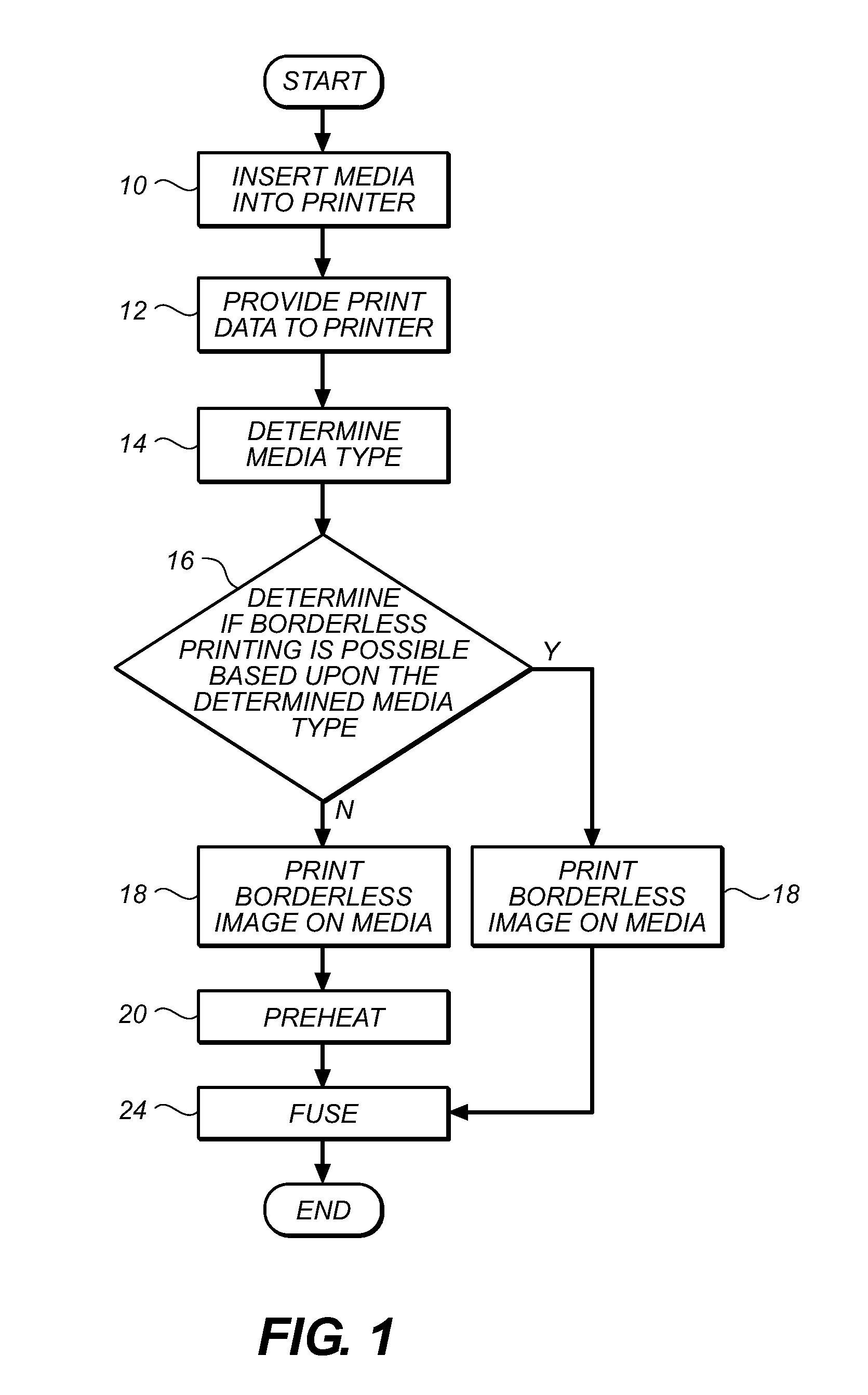Electophotographic borderless printing method and apparatus
a printing method and apparatus technology, applied in the field of electophotographic borderless printing methods and apparatuses, can solve the problems of increasing labor costs and production time, unable to produce a borderless print, and difficult borderless printing of electophotographic prints, so as to reduce waste, avoid image defects, and reduce labor costs. and materials.
- Summary
- Abstract
- Description
- Claims
- Application Information
AI Technical Summary
Benefits of technology
Problems solved by technology
Method used
Image
Examples
Embodiment Construction
[0017]The invention relates to apparatus and methods for production of electophotographic printed images on media. For the sake of clarity, the four edges of the media may be referred to herein as the leading edge, the trailing edge, and two lateral edges, in reference to the direction of travel through the printer. The printed output is referred to in terms of a print area, defined by a length and width of the finished printed product.
[0018]As in shown in FIG. 1, a method of forming electophotographic borderless prints includes inserting media 8 into a printer such as printer 40 shown in FIG. 2 (Step 10); providing print data to the printer (Step 12); determining the media type (Step 14); and determining if borderless printing is possible based on the determined media type (Step 16). Where borderless printing would typically cause a leading edge image defect, the printer pre-heats a leading edge of the media before the media enters a fusing area in the printer to enable defect-free...
PUM
 Login to View More
Login to View More Abstract
Description
Claims
Application Information
 Login to View More
Login to View More - R&D
- Intellectual Property
- Life Sciences
- Materials
- Tech Scout
- Unparalleled Data Quality
- Higher Quality Content
- 60% Fewer Hallucinations
Browse by: Latest US Patents, China's latest patents, Technical Efficacy Thesaurus, Application Domain, Technology Topic, Popular Technical Reports.
© 2025 PatSnap. All rights reserved.Legal|Privacy policy|Modern Slavery Act Transparency Statement|Sitemap|About US| Contact US: help@patsnap.com



